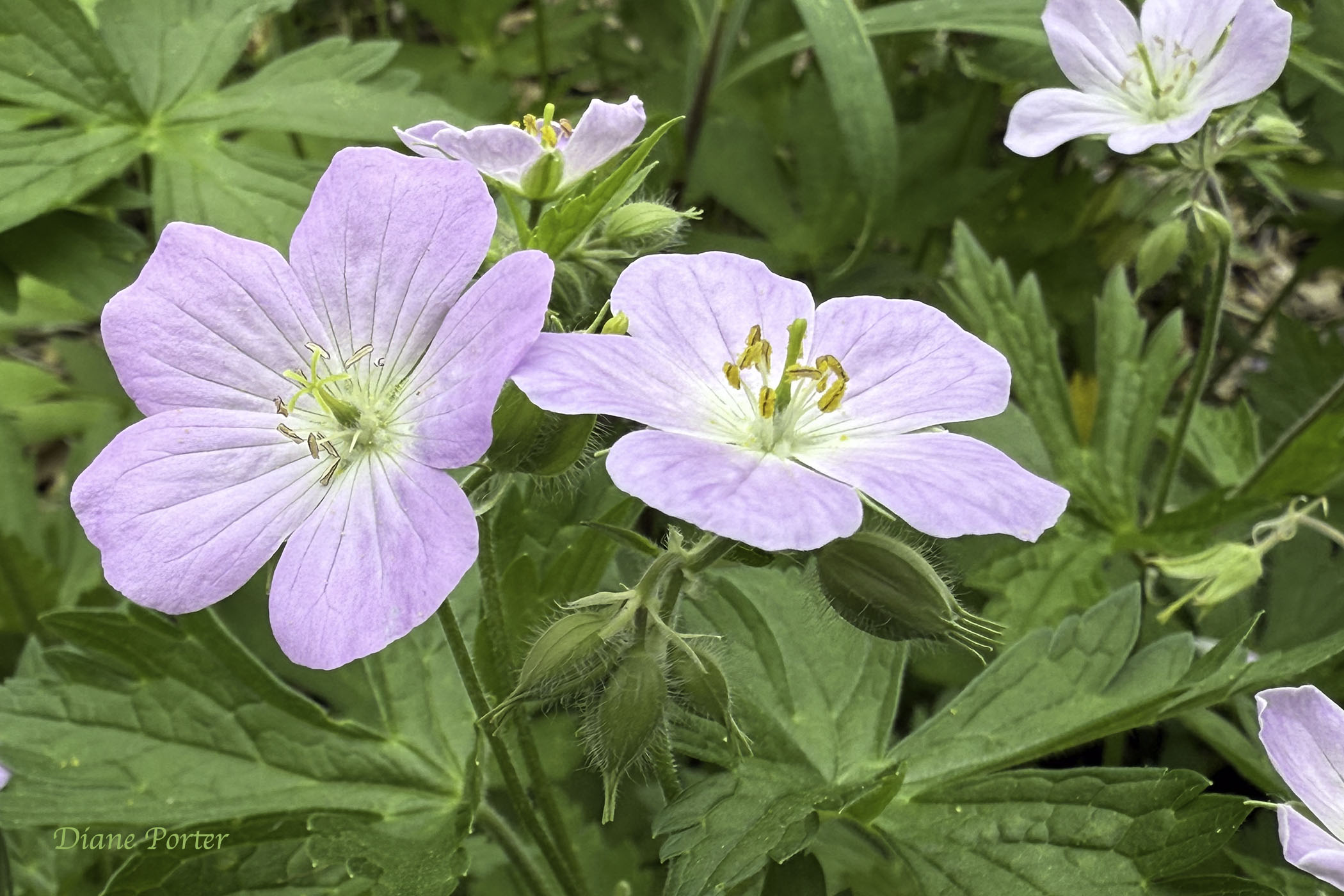Diane Porter of Fairfield first published this post on My Gaia, an email newsletter “about getting to know nature” and “giving her a helping hand in our own backyards.” Diane also maintains the Birdwatching Dot Com website and bird blog.
My first look at Wild geraniums (Geranium maculatum) was on a vertical cliff, which forms the far bank of Crow Creek, near my home.

Pink-purple flowers leaned out over the stream, lavish among mosses, ferns, and other wildflowers.
I didn’t know what they were.

I wanted a closer look, but there was no way to reach the plants, across the deep creek and against a cliff that dropped as straight as a curtain. Without success I searched the banks on my side of the creek for more of the flowers.
At home I paged through Wildflowers of Iowa Woodlands, by Sylvan T. Runkel, until I found it. Wild geranium, a native wildflower widespread in Eastern North America.
I needed this plant where I could see it every day. I needed it near my home.

A friend, a horticulturist by profession and passion, invited me on a mid-spring day to see his White Oak grove. He seemed quite set on our walking to the site from a certain direction.

Wild geranium spreads and can form large colonies
As we rounded a hill, an expanse of Wild Geraniums appeared suddenly. Masses of lavender and violet blossoms quilted the sloping ground. They were radiant in sunlight that filtered through the leaves of ancient oak trees.
I was gasping at the sight, my eyes filled with the unspeakably lovely colors of the petals.
My friend was smiling. “This is why I wanted to come from this direction. So that you would get the full effect.”

Petal color varies from pale to deep lavender
He gave me permission to come back and collect seeds when they ripened, which I joyfully took him up on. That fall, I scattered seeds under an oak tree next to my home.
The next year, wild geraniums came up all over.

Now I would know this leaf anywhere
The big, odd leaves were instantly recognizable, with their deeply cut lobes and toothy borders. The plants did not bloom that year. They spent their first year building their roots.

Native green bees collect pollen from the blossoms
The next year, the buds opened. What impressed me most were the ten custard-yellow anthers, accented by fine red lines

Wild geraniums are some of the easiest plants I’ve ever grown. They seem to prefer the shade of deciduous trees, but I’ve found them in sunny locations, too. They like the soil damp, but they get along even when it’s dry. They thrive in deep loamy soil but can also grow in rocky ground.

Self-sown wild geraniums
Every year I cut some stems as they’re going to seed and toss them where I’d like to see more wild geraniums.
How many more? I’ll let the wild geraniums decide.


1 Comment
Thank you, Diane, lovely post!
In some places in the eastern half of the U.S., steep cliffs may serve as badly-needed little refuges for wildflowers endangered by white-tailed deer. Most Americans don’t know how much of an ecological disaster deer overpopulation has become for wildflowers, songbirds, butterflies, and other small wildlife in parts of states like Pennsylvania.
Fortunately, the situation is not so bad in most of Iowa. But it is or has been pretty bad in certain places like Iowa City. Iowans who care about wildflowers and wildlife need to keep an eye on Iowa deer policies, state and local. And we need to keep an eye on local wildflower populations too.
PrairieFan Fri 6 Jun 12:46 AM